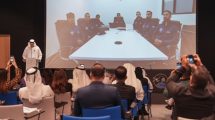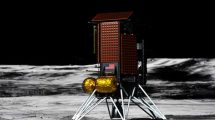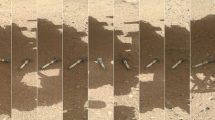 Narda Safety Test Solutions has added a scope option to its NRA range of remote spectrum analysers. This records the signal level continuously versus time and also makes the I/Q data available. A variant with LNB control is also available. This can be used to switch the low noise block converters (LNB) of satellite receiving antennas to the desired frequency range (low band / high band) and the appropriate polarisation (horizontal / vertical).
Narda Safety Test Solutions has added a scope option to its NRA range of remote spectrum analysers. This records the signal level continuously versus time and also makes the I/Q data available. A variant with LNB control is also available. This can be used to switch the low noise block converters (LNB) of satellite receiving antennas to the desired frequency range (low band / high band) and the appropriate polarisation (horizontal / vertical).
I/Q data recording and time analysis
The NRA-3000 and NRA-6000 analysers can continuously record signal characteristics versus time with the new “Scope and I/Q Data” option. The frequency resolution (RBW) can be set between 100 Hz and 32 MHz. The time resolution can be set down to 31.25 nanoseconds. The analysers also output “online” the raw data separated into its real (in-phase) and imaginary (quadrature) components. With the right external software, experts can extract practically any information from this I/Q data.
Narda Remote Spectrum Analysers cover a frequency range from 9 kHz up to 6 GHz with resolution bandwidths from 100 Hz to 32 MHz depending on the device type.
LNB Control
The NRA-3000 “LNB Control” variant generates all the usual control voltages for switching the LNB to low band or high band and horizontal or vertical polarisation. These voltages can be increased if necessary to compensate for cable losses. Remote operation of the LNB Control is integrated into the standard command set of the analyser. This means that no additional equipment needs to be involved in the control software or the signal path. LNB Control for the NRA-3000 does not take up any additional space in the rack, either.
The NRA family
Narda Remote Spectrum Analysers cover a frequency range from 9 kHz up to 6 GHz with resolution bandwidths from 100 Hz to 32 MHz depending on the device type. They can be integrated into practically any measurement environment thanks to their Ethernet interface (100BASE-TX) and plain text ASCII remote control commands. Fast transmission of large quantities of data can be done in binary format.
The application-oriented operating modes are: Spectrum analysis (Spectrum), power measurement of several channels simultaneously (Multi-Channel Power), level measurement with RMS and peak values (Level Meter) and recording the signal characteristic versus time (Scope and I/Q Data).
All NRA instruments are 1U high and weigh less than five kilos. They operate noiselessly, without fan cooling, thanks to a power consumption of less than 25 VA. They are therefore particularly suitable for use in mobile systems or where space is limited.
About I/Q data
Modern wireless communications methods mostly use combinations of amplitude, frequency, and phase modulations. Separate characteristics versus time for the real (in-phase) and imaginary (quadrature) components of the signal must be available for complete testing of the quality and integrity of the transmitted and received signals.
About LNB
Low noise block converters (LNB) convert the Ku band signals (10.7 to 12.75 GHz) received by the satellite to the L band (950 to 2130 MHz), which can be fed through coaxial cables and easily processed by the receivers. The LNB is placed directly behind the dish feed. The LNB gets its power supply and control signals via the coaxial cable. It switches polarization to vertical or horizontal depending on the power supply voltage (14 V or 18 V). When a 22-kHz signal is superimposed, it switches the receive range from low band (10.7 to 11.7 GHz) to high band (11.7 to 12.75 GHz).












Add Comment